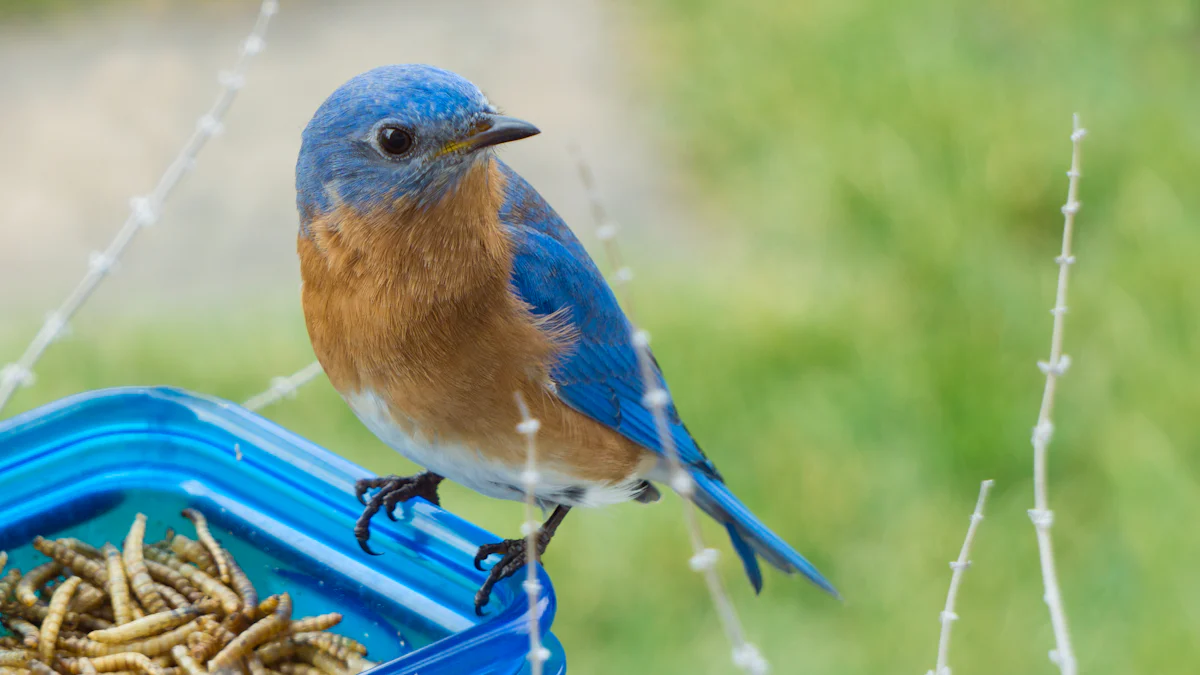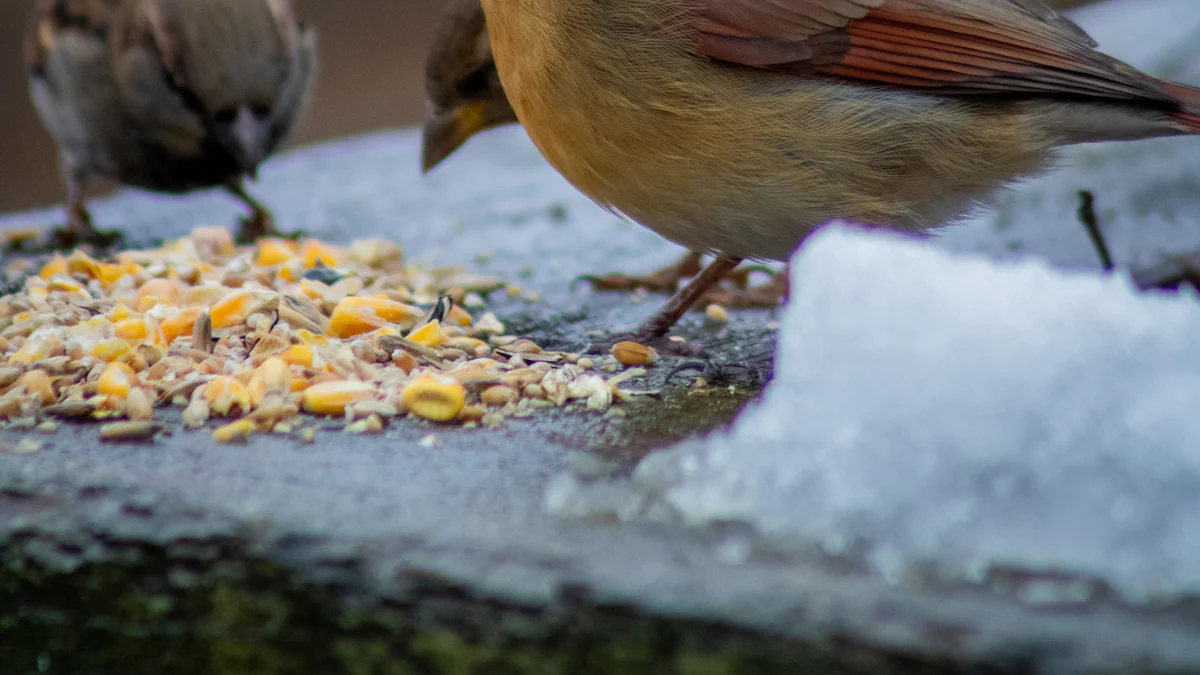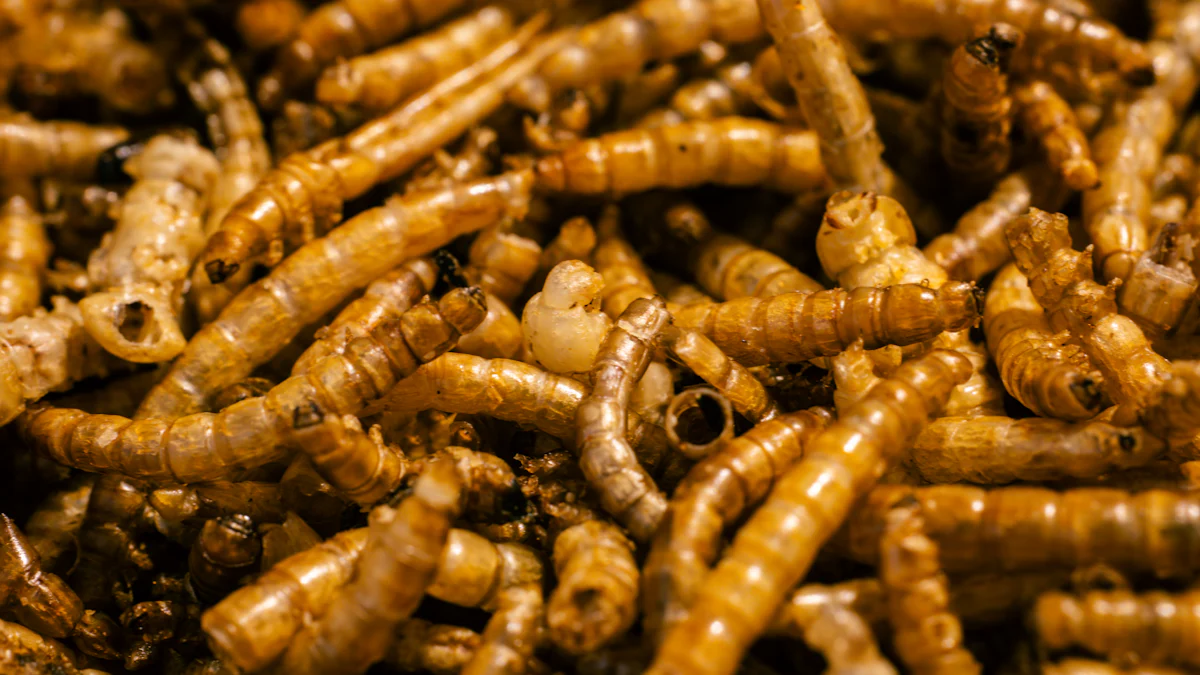
Have you ever wondered what makes dried mealworms for birds such a popular choice? These little treats are packed with protein, fat, and fiber, giving birds the energy they need all year. They’re especially helpful during nesting or migration. Plus, they attract a variety of birds like robins, sparrows, and bluebirds to your yard!
Key Takeaways
- Dried mealworms are very healthy for birds. They give birds protein, fat, and fiber to stay strong and active all year.
- Feeding dried mealworms helps birds in every season. In winter, they keep birds warm. In summer, they help birds raise their babies.
- Dried mealworms are simple to use. They don’t need a fridge and can be mixed with seeds to bring many bird types to your yard.
Nutritional Benefits of Dried Mealworms for Birds

Protein, Fat, and Fiber Content
Dried mealworms for birds are like a superfood. They’re packed with protein, fat, and fiber, which are essential for a bird’s health. Did you know dried mealworms contain about 53% protein and 28% fat? That’s way more than live mealworms, which only have 20% protein and 13% fat. This makes dried mealworms a powerhouse of nutrition.
Here’s a quick breakdown of their nutrients:
| Nutrient | Amount |
|---|---|
| Crude Protein | 52.8% |
| Crude Fat | 24.7% |
| AD Fiber | 9.0% |
| Calcium | 0.05% |
| Phosphorus | 1.03% |
| Sodium | 0.097% |
| Manganese (ppm) | 23 |
| Zinc (ppm) | 144 |
These nutrients help birds stay energetic, maintain healthy feathers, and support their overall well-being.
Seasonal Benefits for Birds
Birds face different challenges depending on the season, and dried mealworms for birds can help them year-round. In winter, birds need extra fat to stay warm and survive when food is scarce. Dried mealworms provide the high-fat content they need. During summer, birds require protein to raise their young and stay active. Mealworms are perfect for that too!
Here’s how they help in different seasons:
| Season | Benefits of Dried Mealworms |
|---|---|
| Winter | High protein and fat help birds survive cold weather. |
| Summer | Essential nutrients support nesting and raising chicks. |
By offering dried mealworms, you’re giving birds the boost they need to thrive, no matter the time of year.
Addressing Nutritional Gaps
Sometimes, birds can’t find enough natural food, especially in urban areas or during harsh weather. Dried mealworms fill those gaps. They’re rich in protein, which is crucial for feather health and energy. The fiber aids digestion, while the fats provide the energy birds need to stay active.
Here’s why they’re so beneficial:
- High protein improves feather quality and supports breeding.
- Fiber keeps their digestive system healthy.
- Essential fats give them energy during food shortages.
By adding dried mealworms to your feeding routine, you’re helping birds stay healthy and strong, even when nature doesn’t provide enough.
How to Feed Dried Mealworms to Birds

Using Feeders for Dried Mealworms
Feeding birds dried mealworms is super easy when you use the right feeder. I’ve found that platform or tray feeders work best. They’re simple, and birds can easily spot the mealworms. Make sure the feeder has sides at least an inch high. This keeps the mealworms from falling out. If your area gets a lot of rain, choose a feeder with a roof or drainage holes. This keeps the mealworms dry and fresh.
Here are a few tips I follow:
- Offer small amounts of dried mealworms year-round.
- Mix them with seeds or suet to attract more birds.
- Check the feeder regularly for spoilage or pests.
If you’re just starting, try sprinkling a few mealworms on the ground. Birds like robins and bluebirds love foraging this way!
Rehydrating Dried Mealworms
Rehydrating dried mealworms is a great way to make them even more appealing. I usually soak them in warm water for about 20-30 minutes. It’s simple:
- Place the mealworms in a bowl.
- Pour warm water over them until they’re fully covered.
- Let them soak for at least 30 minutes.
- Drain and serve them to the birds.
Rehydrated mealworms are softer and easier for birds to eat. They’re especially helpful during nesting season when baby birds need extra hydration. Just remember to only soak what you’ll use that day to avoid spoilage.
Ensuring Proper Hydration for Birds
Birds are pretty good at finding water, but I like to give them a little extra help. Rehydrated mealworms provide a small boost of moisture, which is handy during hot summers or nesting season. I also keep a birdbath nearby. It’s fun to watch birds drink and splash around!
If you notice birds like chickadees visiting often, they might be looking for water. Adding rehydrated mealworms to their diet ensures they stay hydrated and healthy. It’s a simple way to support their well-being while enjoying their company in your yard.
Dried vs. Live Mealworms for Birds
Benefits of Dried Mealworms
I love using dried mealworms for birds because they’re so convenient. They don’t need refrigeration, which makes storage a breeze. I just keep mine in an airtight container in a cool, dry spot. They last a long time, so I don’t have to worry about them spoiling quickly. Plus, they’re easy to handle. Unlike live mealworms, dried ones don’t wiggle around, which is great if you’re squeamish like me!
Dried mealworms are also packed with nutrients. The drying process removes water, concentrating the protein and fat content. This makes them an excellent energy source for birds. I’ve noticed that they’re perfect for mixing with seeds or suet, creating a balanced meal for my feathered visitors.
Benefits of Live Mealworms
Live mealworms, on the other hand, are a favorite among many bird species. Bluebirds and Carolina wrens, for example, seem to prefer them over dried ones. I’ve seen how live mealworms provide hydration, which is crucial during nesting season. Baby birds can’t drink water directly, so live mealworms help keep them hydrated.
They’re also great for reducing foraging time. Birds can conserve energy by eating live mealworms, especially during migration or when food is scarce. I’ve found that offering live mealworms during these times attracts more birds to my yard.
Choosing the Right Option for Your Birds
When deciding between dried and live mealworms, I think about what my birds need. Dried mealworms are perfect for year-round feeding. They’re affordable, easy to store, and packed with nutrients. Live mealworms, however, are better during nesting season or extreme weather. They provide hydration and are more appealing to picky eaters.
If you’re new to feeding birds, start with dried mealworms. They’re easier to handle and store. Once you’re comfortable, try offering live mealworms occasionally. Your birds will appreciate the variety, and you’ll enjoy watching them thrive!
Dried mealworms for birds are a fantastic addition to any feeding routine. They’re packed with essential nutrients like protein and fats, supporting birds during critical times like nesting and migration. I’ve noticed how they attract a variety of species, from robins to wrens, making birdwatching even more enjoyable.
Here’s why I love using them:
- They enhance biodiversity by attracting common and rare bird species.
- They help control pests naturally by supporting insect-eating birds.
- Their eco-friendly production benefits the environment.
By offering dried mealworms, you’re not just feeding birds—you’re creating a thriving, lively backyard ecosystem.
FAQ
How often should I feed dried mealworms to birds?
I recommend offering dried mealworms a few times a week. Birds love variety, so mix them with seeds or suet for a balanced diet.
Can I feed dried mealworms to baby birds?
Yes! Rehydrated mealworms are softer and easier for baby birds to eat. Soak them in warm water before feeding to provide extra hydration and nutrition.
Will dried mealworms attract pests to my yard?
Not really. Dried mealworms don’t spoil quickly and don’t attract pests like live ones might. Just store them in an airtight container to keep them fresh.


